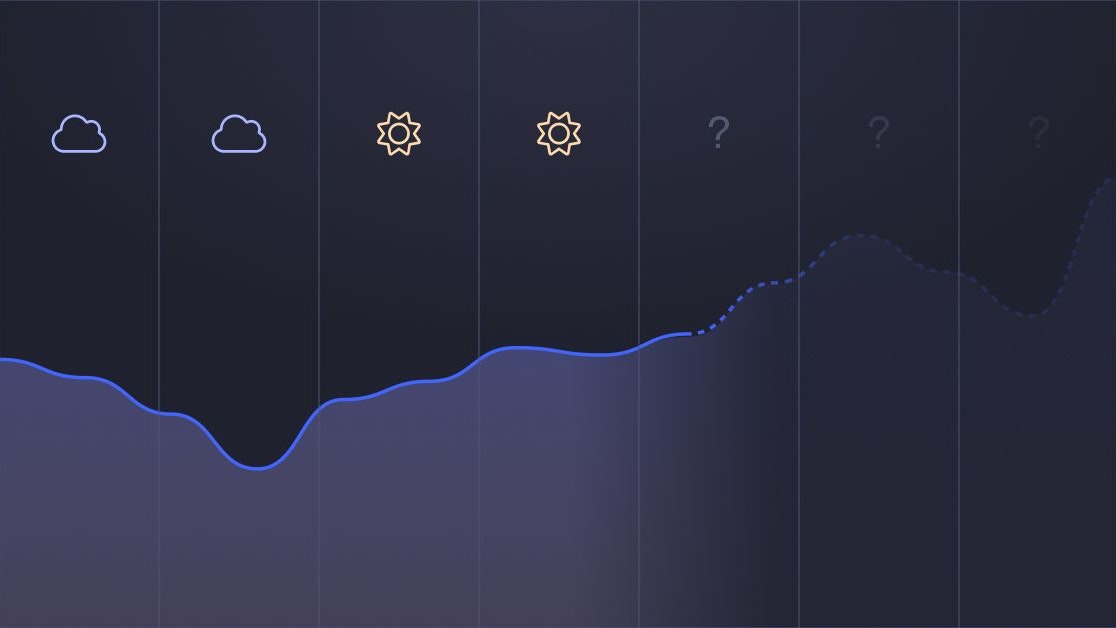How to create a cash flow forecast for your startup

For early-stage and growth-stage startups, having a cash flow plan can be the difference between building a thriving, successful company, and being among the 44% of startups that fail due to poor cash flow planning.
When you can accurately predict the flow of money in and out of your business, you’ll be able to make smarter business decisions and ultimately avoid running out of runway.
Read on to learn more about what a cash flow forecast is, what benefits it provides, and how to build one for your startup.
What is a cash flow forecast?
A cash flow forecast is a breakdown of the expected money that is coming into and going out of your business, typically over a set period of time. While customer payments for the goods or services that your startup provides would be considered “cash in,” the money that flows out of your business to cover bills and vendor payments is considered “cash out.” The sum of the two — cash in combined with cash out — is your net cash flow.
The estimates in a cash flow forecast are largely based on historical business performance benchmarks, helping you create a cash outlook that is as accurate as possible for any given time period, be that a week, a month, a quarter, or a year. Keep in mind that the further out you’re forecasting, the greater the likelihood for error since there are increased variables that could impact cash flow over an extended period.
Note, the key difference between a cash flow forecast and a budget is that a budget traditionally gives you a big picture look at your company’s cash flow and planned spending, whereas a cash flow forecast focuses specifically on the month-by-month breakdown of your company’s cash position — i.e., the actual liquid cash you expect to have on hand at the end of each month.
What are the benefits of a cash flow forecast?
More often than not, you can trace the failure of a business back to consistent negative cash flow. Thriving companies proactively manage their cash flow to ensure that they remain cash flow positive. When your business is regularly bringing in more cash than it has going out, that’s when growth opportunities start to open up — and proper cash flow forecasting can be the key to finding the right rhythm.
Here are a few of the ways that a cash flow forecast can benefit your company and help you achieve your business goals:
- Smarter budgeting. Because a cash flow forecast gives you a detailed projection of where your company’s cash is coming from and where it’s going, you can get a sense of which expenses are essential to your business, and which ones are more of a nice-to-have.
- Short- and mid-term strategic planning. A good cash flow forecast can serve as the backbone of both your business strategy and your cash management strategy. For example, by giving you a sense of your liquidity baseline in the coming months and quarters, a cash flow forecast can help inform decisions about how to use your cash, such as choosing to produce a new product or service or investing excess cash so that it earns yield until you need to access it.
- Bottleneck anticipation. By giving you a line of vision into your company’s near- and mid-term cash expectations, a cash flow forecast can allow you to catch any potential gaps or cash flow shortages early. This in turn allows you to plan accordingly, such as by managing your expenses or leveraging a business loan to cover expenses for a period of time where temporary negative cash flow is anticipated.
- Trend awareness. Getting into the habit of cash flow forecasting and keeping an eye on how your cash flow tracks over time can help you anticipate regularly occurring cash flow trends, which will ultimately support more thoughtful planning over time.
As you create cash flow forecasts more regularly and begin comparing each forecast to the actual results in a given time period, it will get easier to forecast with greater accuracy and plan more efficiently.
How to create a cash flow forecast
To create a cash flow forecast, you’ll essentially be breaking down an itemized list of the cash coming in and going out of your business every month to determine the monthly net cash flow for any given period — so the first thing to tackle is defining what your timeframe looks like.
Step 1: Determine the length of your forecast
Before even getting into the specifics of putting together your forecast, you have to determine your projection period. Are you looking to forecast your cash flow for a month out? Three months? A year? The amount of time you decide to look at could be based on different factors. For example, presenting a cash flow forecast to a prospective investor during a pitch could call for a long-term forecast where you break down projected cash flow over the next several years. Alternatively, if you’re putting together a forecast to plan your cash management strategy over the course of the next few months, you might opt for a 3-month or 6-month forecast. As you’re deciding what your forecasting plan is, keep in mind that the longer out you forecast, the less accurate your forecast is likely to be. While it does take more work, looking at shorter periods of time — and looking at them more frequently — helps give you the most accurate view of your company’s cash flow. You might even choose to create both a long-term cash flow forecast and more frequent short-term forecasts to ensure that you’re on track.
Step 2: Create a list of your cash sources and expenses
A cash flow forecast is based on three core data sources:
- Opening balance: This is your cash position, the actual sum of cash that your startup will have at the beginning of a given period. It’s typically pulled from your bank statement or balance sheet.
- Collected accounts receivables: These are the key cash inflows that are anticipated during the given period. A few things that might be covered in this section include: cash sales, customer deposits, financing, new investments, and interest income.
- Completed accounts payable: These are the expected expenses that will make up your cash outflows during a given period. A few things you might list out in this section of the forecast are rent, taxes, utilities, payroll, credit payments, software subscriptions, equipment, and vendor payments.
Step 3: Build your forecast
Once you’ve got all of the necessary information and numbers to build your forecast, the next step is to put all of that together in a spreadsheet. Create the appropriate number columns to capture the number of months your forecast is covering, and then begin inputting all of the numbers to determine your net cash balance — your net cash flow plus your opening balance — at the end of each month.
Here’s an example of what a 3-month cash flow forecast might look like:
January | February | March | |
|---|---|---|---|
Opening balance | $20K | $24K | $32K |
Cash in | $19K | $24K | $19K |
— Cash received from sale | $13K | $16K | $15K |
— New investments | $2K | $3K | $2K |
— Receivables collection | $4K | $5K | $2K |
Cash out | $15K | $16K | $11K |
— Payroll | $6K | $6K | $6K |
— Vendor payments | $2K | $3K | $2K |
— Rent | $4K | $5K | $2K |
— Equipment | $3K | $2K | $1K |
Closing balance | $24K | $32K | $40K |
As you build out your cash flow forecast, keep in mind that a valuable part of accurate forecasting is comparing your forecast to your actuals as time passes. It’s important to understand how your projections are matching up to the actual numbers and update your forecast as needed. And again, the more you forecast, the more accurate your forecasts will become.
Related reads

The 8 most common inventory mistakes (and how to fix them)

What your first consulting retainer agreement should cover — but often doesn’t

Are business credit card rewards taxable?
